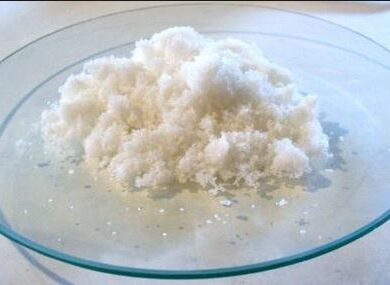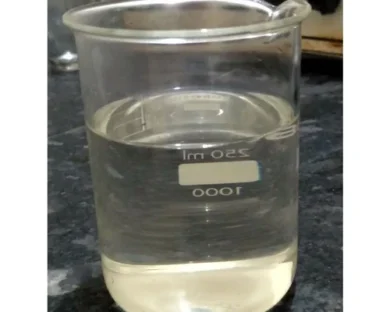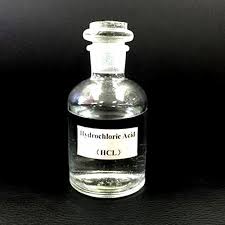Sodium Lauryl Ether Sulfate (SLES 70%)
Sodium Lauryl Ether Sulfate (SLES 70%)
Sodium Lauryl Ether Sulfate (SLES) is a widely used anionic surfactant that plays a crucial role in various personal care and cleaning products. The 70% concentration variant is a popular choice for its balance between effectiveness and formulation flexibility. SLES is derived from ethoxylated lauryl alcohol, which undergoes sulfation to form the final product. The 70% concentration indicates the amount of active ingredient in the solution, with the remaining 30% comprising water and other solvents. This concentration is optimal for achieving the desired foaming and cleaning properties in formulations. Some individuals may experience skin irritation, although manufacturers often address this through proper formulation and the addition of soothing agents. The production and disposal of SLES may have environmental implications. However, many manufacturers are working towards more sustainable practices.
USES AND APPLICATIONS FOR SLES 70%
INDUSTRIES
It is used in numerous industrial applications like:-
- Used in personal care products
- Used as a surfactant
- Used in the textile industry
- Used in cosmetics
- Used as a cleaning agent
Sodium Lauryl Ether Sulfate (SLES 70%)
Sodium Lauryl Ether Sulfate (SLES 70%) is an anionic surfactant derived from the ethoxylation of lauryl alcohol, followed by sulfation. This process yields a mixture of ethoxylated fatty alcohols with varying lengths of the ethylene oxide chain, combined with sulfate groups. The resulting compound, SLES, is widely used in various industries for its excellent foaming, cleansing, and emulsifying properties
Chemical Structure and Properties:
The chemical formula of SLES is C12H25(OCH2CH2)nOSO3Na, where n represents the average number of ethylene oxide units. SLES typically contains about 70% active ingredients, with the remainder being water and salts to adjust viscosity and pH.
SLES is a versatile compound with amphiphilic properties, meaning it possesses both hydrophilic (water-attracting) and lipophilic (oil-attracting) characteristics. This unique structure allows SLES to effectively interact with both water and oil, making it an efficient detergent and emulsifier.
Uses of Sodium Lauryl Ether Sulfate (SLES 70%):
Household and Personal Care Products:
SLES is extensively utilized in the formulation of household and personal care products due to its excellent cleansing and foaming properties. It is a key ingredient in:
- Shampoos: SLES acts as a primary surfactant in shampoos, producing rich lather and effectively removing dirt, oils, and styling products from the hair and scalp.
- Body Washes and Shower Gels: SLES provides luxurious foam and gentle cleansing in body washes and shower gels, leaving the skin feeling refreshed and clean.
- Liquid Soaps: SLES serves as a primary ingredient in liquid hand soaps, effectively removing dirt and bacteria while remaining gentle on the skin.
- Dishwashing Detergents: Sodium Lauryl Ether Sulfate (SLES 70%) enhances the cleaning power of dishwashing detergents by efficiently breaking down grease and food residues on dishes and utensils.
- Laundry Detergents: SLES contributes to the cleaning efficacy of laundry detergents by facilitating the removal of dirt, stains, and odors from fabrics.
Industrial and Institutional Cleaning:
In addition to household and personal care products, SLES finds applications in industrial and institutional cleaning formulations, including:
- Surface Cleaners: SLES is used in multipurpose surface cleaners for removing dirt, grease, and stains from various surfaces, including floors, countertops, and appliances.
- Vehicle Washes: SLES-based formulations are employed in car wash soaps and detergents for effectively cleaning vehicles without causing damage to paint or finishes.
- Industrial Degreasers: SLES is incorporated into industrial degreasers and heavy-duty cleaning solutions for removing tough stains, oils, and residues from machinery, equipment, and surfaces in manufacturing facilities.
Textile Processing
SLES plays a crucial role in textile processing as a wetting agent, emulsifier, and detergent. Its use in textile applications includes:
- Textile Wetting: SLES facilitates the wetting of textiles during processing, allowing for uniform dyeing and treatment of fabrics.
- Emulsification: SLES aids in the emulsification of oils and other additives in textile formulations, ensuring proper dispersion and effectiveness of treatment chemicals.
- Cleaning Agents: SLES-based formulations are employed as cleaning agents in textile mills for removing sizing agents, lubricants, and other contaminants from fabrics during pre-treatment and finishing processes.
Other Industrial Applications:
Beyond the household, personal care, and textile industries, SLES finds diverse applications in various other sectors, such as:
- Agrochemicals: SLES is used as a wetting agent and dispersant in agricultural formulations, including herbicides, insecticides, and fungicides, to improve coverage and efficacy.
- Adhesives and Sealants: SLES is incorporated into adhesive and sealant formulations as a surfactant and emulsifier to improve wetting and bonding properties.
- Firefighting Foams: SLES is utilized in the production of firefighting foams for its ability to generate stable, long-lasting foam that efficiently suppresses fires by cooling and smothering.





